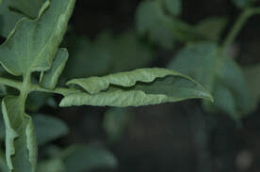Fall is a good time to plant garlic (Allium sativum) if you want large quality cloves next summer. It is best to apply 3 pounds of 10-10-10 fertilizer per 100 square feet and mix into the soil before planting, or fertilize according to a soil test. Plant individual cloves point up and spaced 6 inches apart and 1 to 2 inches deep. The larger the clove planted, the larger the bulb at harvest. Water in well and mulch with straw to conserve soil warmth and encourage good establishment.
Harvest will not occur until next summer. Test dig when the lower 1/3 of the foliage is yellow. If the cloves have segmented, it is time to harvest. If they haven’t segmented, wait another week or two. Elephant garlic (Allium ampeloprasum) should also be planted now. It is a plant with a milder garlic flavor and is actually a closer relative to the leek than to true garlic.
Inchelium Red has an excellent storage life and Chesnok Red is good choice as well. Others you can try include Armenian, Music, Purple Glazer, Carpathian Mountain, Metechi, China Strip, Ajo Rojo, Asian Tempest and Silver White. Kansas has the type of climate that allows us to grow a wide variety of garlic types well.
For more information on growing garlic check out this K-State Garden Hour- https://mediasite.k-state.edu/mediasite/Play/7cf6d3b9d31843a2b7b51c499ee1e57e1d
By: Cassie Thiessen

 Extension Master Gardeners come from a variety of backgrounds and share a passion for gardening, an enthusiasm for learning, and a commitment to helping others. Master Gardeners have successfully completed basic training in the discipline of horticulture and they share their time and expertise as volunteers in their community to promote Post Rock Extension District’s educational mission.
Extension Master Gardeners come from a variety of backgrounds and share a passion for gardening, an enthusiasm for learning, and a commitment to helping others. Master Gardeners have successfully completed basic training in the discipline of horticulture and they share their time and expertise as volunteers in their community to promote Post Rock Extension District’s educational mission. Tomato color can also be affected by heat. When temperatures rise above 95 degrees F, red pigments don’t form properly, though the orange and yellow pigments do. This results in orange fruit. This doesn’t affect the edibility of the tomato, but often gardeners want that deep red color back.
Tomato color can also be affected by heat. When temperatures rise above 95 degrees F, red pigments don’t form properly, though the orange and yellow pigments do. This results in orange fruit. This doesn’t affect the edibility of the tomato, but often gardeners want that deep red color back. Every year we have calls from gardeners who have tomato plants with leaves that curl up. When tomato plants grow vigorously in mild, spring weather the top growth often exceeds the root development. When the first few days of warm, dry summer weather hit, the plant ‘realizes’ that it has a problem and needs to increase its root development. The plant tries to reduce its leaf area by rolling leaves. The leaves curl along the length of the leaf (leaflet) in an upward fashion. It is often accompanied by a thickening of the leaf giving it a leathery texture. Interestingly, leaf roll is worse on some varieties than others.
Every year we have calls from gardeners who have tomato plants with leaves that curl up. When tomato plants grow vigorously in mild, spring weather the top growth often exceeds the root development. When the first few days of warm, dry summer weather hit, the plant ‘realizes’ that it has a problem and needs to increase its root development. The plant tries to reduce its leaf area by rolling leaves. The leaves curl along the length of the leaf (leaflet) in an upward fashion. It is often accompanied by a thickening of the leaf giving it a leathery texture. Interestingly, leaf roll is worse on some varieties than others.